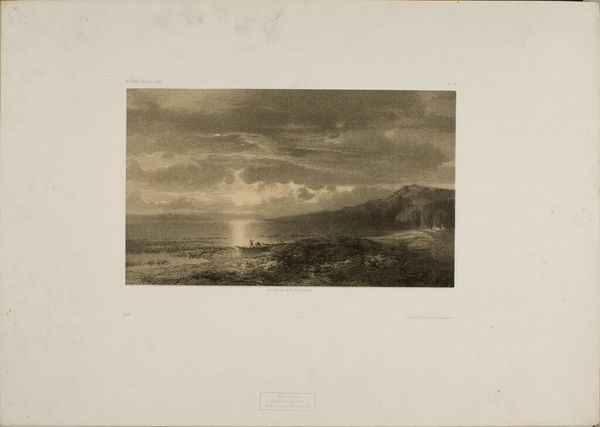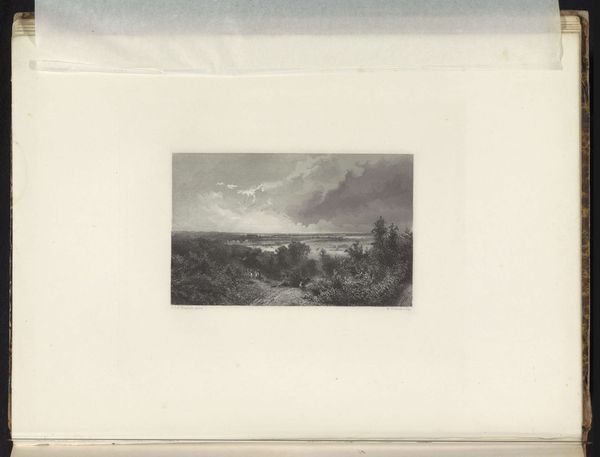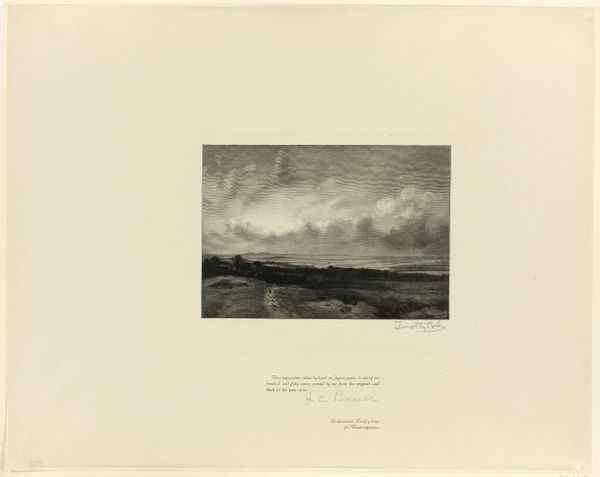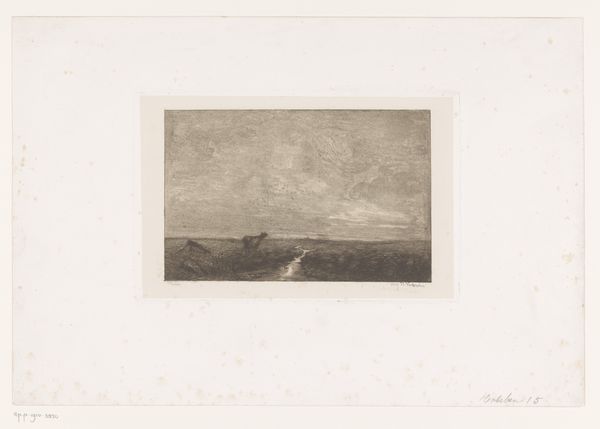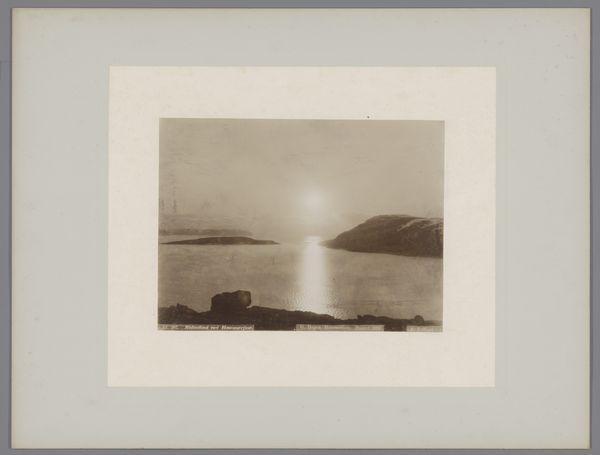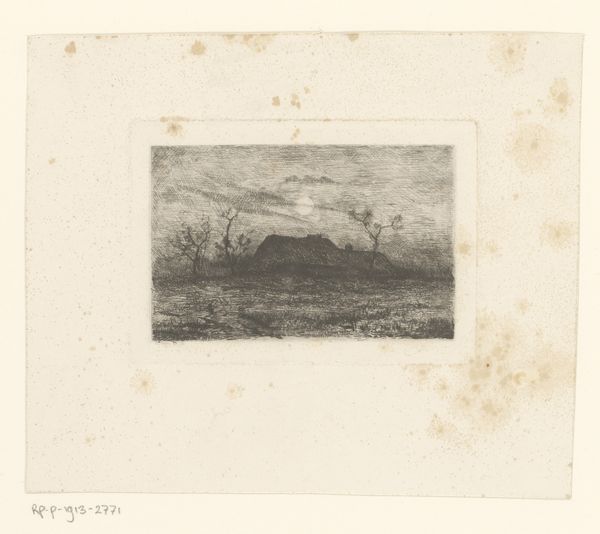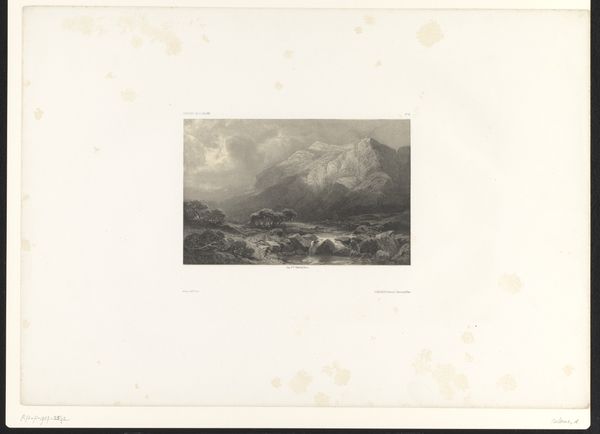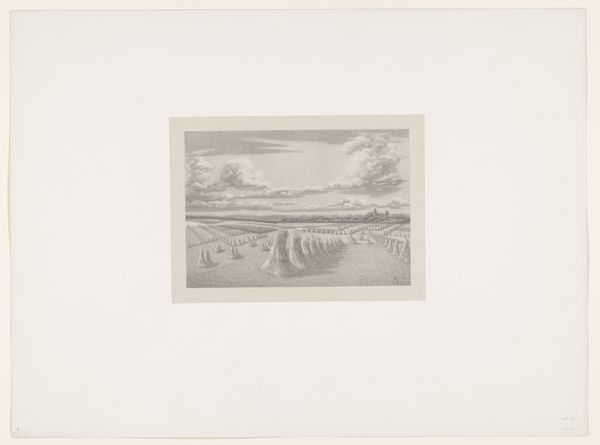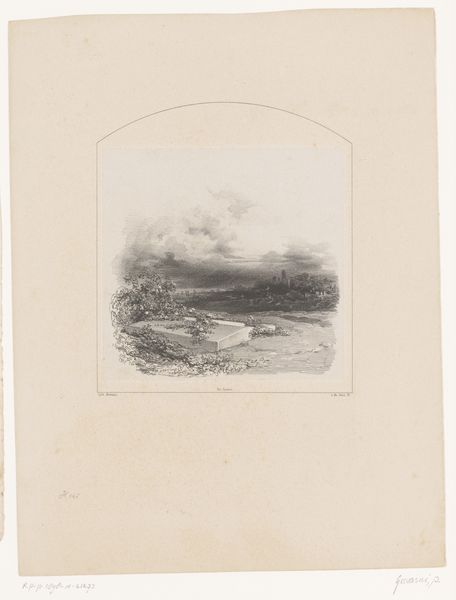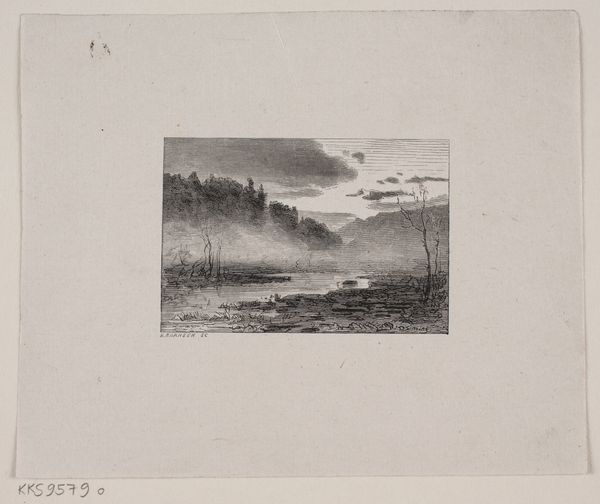
Dimensions: height 377 mm, width 527 mm
Copyright: Rijks Museum: Open Domain
Alexandre Calame created this landscape scene using lithography, a printmaking technique where an image is drawn on stone or metal and then transferred to paper. The magic of lithography lies in its reliance on the mutual repulsion of grease and water. Calame would have drawn his design with a greasy crayon, then treated the stone so that ink would only adhere to the drawn areas. Look closely, and you can see the subtle textures created by this process, mimicking the ruggedness of the landscape. The moody atmosphere and dramatic lighting effects suggest a romantic sensibility. The lithograph was a relatively new medium in the 19th century, enabling the wide distribution of images. This print allowed Calame, trained as a painter, to disseminate his vision of the natural world to a broader audience, playing into the era’s growing appreciation for picturesque scenery and outdoor leisure. It allowed a mass consumption of his art and a wider audience to enjoy it. Think about the amount of work involved in reproducing multiple copies, each one bearing the mark of the artist's hand. It shows us how art and industry can meet, and how the making process can be just as important as the image itself.
Comments
No comments
Be the first to comment and join the conversation on the ultimate creative platform.
